by Sandra Gulland | Feb 7, 2014 | Adventures of a Writing Life, On Research, The Game of Hope, Young Adult Literature |

I’m at a research-intensive stage of Draft 2.0 of The Game of Hope. (YA1) I’m working to fill in all the pot-holes before sending it off—that is, all the xxx’s in the manuscript, the xxx’s I throw in while rushing through Draft 1. “I was offered a plate of xxx, xxx and xxx.” That type of thing.
Now I’m trying to figure all those xxx’s out.
If I don’t have the facts in my notes or books, I can usually find what I need to know on-line. I googgled “18th century cooking,” for example, and came up with a delightful “cheese wig”: a small bun coated with a cheese sauce that looked like a wig resting on a wig stand. (Then I googled images for “cheese wig”—gross! I don’t recommend it.)
If Google fails, I go to Amazon.com, and look for searchable books.
If that fails, I’ll go to Books Google.
I everything fails, and the answer is in a book I must have, I’ll order it.
I had an educational experience this morning. The book I want is out-of-print, but offered used on Amazon.com. However, I discovered that to ship a 1$ book to me in Mexico could cost $25 to $75 dollars. (With delivery in April.)
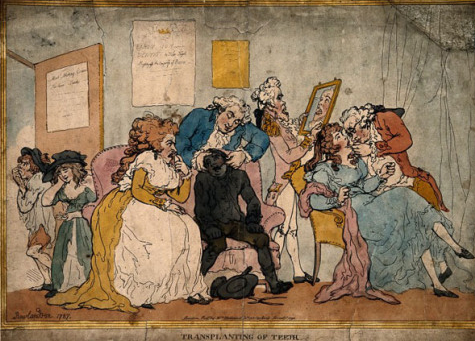
Full stop.
I cut over to Abebook.com, and bought the same book from a used bookstore in the UK for only $1.04 with delivery to Mexico for $7.75—and it may well arrive in a week.
Lesson learned: watch those shipping charges! And always check out Abebook.com.
(Another lesson learned: in looking for illustrations for this blog post, I discovered not to google images of “xxx”!)
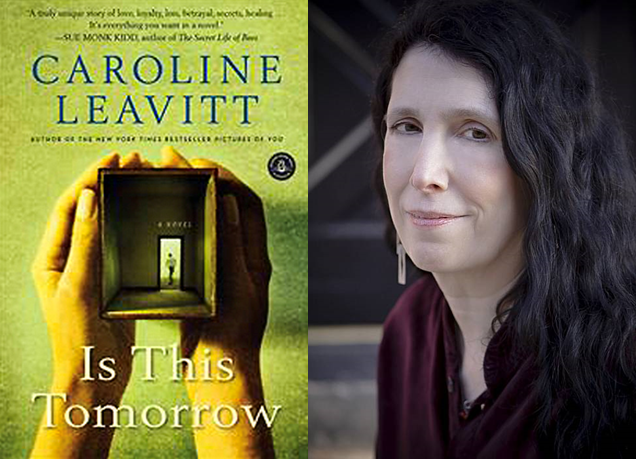
by Sandra Gulland | Sep 8, 2013 | Adventures of a Writing Life, Author Interviews, On Research, Recommended Books, Movies, Podcasts, etc. |
I’ve known Caroline Leavitt for almost as long as the Net has existed (i.e. rather a long time now), but I’ve only met her once or twice. I first knew her on-line through a wonderful Readerville.com writers’ chat group. (Oh, those days!) I read her blog, follow her on Twitter and Facebook, and read her essays and novels.
She has been a persevering literary writer, and with that went the word struggling, so it has been particularly pleasing to see how her last two novels—Pictures of You and Is This Tomorrow—have been such huge hits. And for three reasons, IMO: 1) she’s a fantastic writer, 2) she’s a pro, ready to step up to the plate, and 3) she’s now with Algonquin, a great publisher.
I just read and loved her latest novel, Is This Tomorrow. Caroline has a flawless way of creating real characters and building dramatic tension. This was a novel I didn’t want to put down, that I thought about when I was away from it. As a writer, I longed to know about her process: how does she do it? I’m thrilled that she’s here to answer my questions!
Your novels are compellingly plotted and beautifully developed. How do you do it? What’s your process?
Oh, thank you! John Truby Story structure. I was always one of those writers who followed my muse and I ended up with 800 pages that I had to wade through to find the story. I hated most structure classes. The 3-act deal was like a prison. The rest seemed moronic. But then a UCLA student of mine told me about Truby, how he’s a Yale PhD who studied stories and came up with a kind of system for what all the best ones have–moral choices, reversals, reveals, self-revelations. It made sense to me. It seemed to create a deeper, more nuanced story, and the first time I “trubyized” a novel, I had a NYT bestseller! The first time I trubyized a script, I made the finals at Sundance Screenwriters Lab.
So I map things out in detail right from the start, and end up with a 30-40 page synopsis. Of course it changes as I write, because of discoveries, changes, etc. But the basic spine is the same. It gives you tremendous creativity for discovery, too!
I’ve become an intense plotter, as well, and I’m excited by the process. I recall that you introduced me to your relative’s hypnosis tapes, which I loved. Now I see that you’re experimenting with binaural beats, which sounds similar. Is this part of your writing process? Tell me more!
It is, actually. Binaural beats supposedly recreate the neuron firing of the brain and help you concentrate, get creative, even relieve tinnitus. Do they work or do I just think they work? I don’t know, but does it matter if there are results? I keep one on for creativity and it seems to work. But it might be the placebo effect. (And again, who cares?!)
I’ll be trying that! I was pleased to see mention of several Readervillians in your acknowledgements. Do you use reader/editors, and, if so, at what point in the writing process?
Oh, I absolutely do. I change a lot of them with each book, but right now I am totally dependent on three people. One I show my structural stuff to and he is a great help because that’s what he does–structure work. And I have two writer friends who read the novel chapter by chapter. And I miss Readerville!
I was interested to also note that you used researchers for this novel. (I recall a blog you wrote some time ago of a youth who volunteered.) This is something I’ve considered. How does that work?
I had to hire someone because I was spending whole weeks trying to find out what 1950s cops used instead of crime tape (sawhorses and rope!) So I hired two high school interns who were adorable, but not as helpful as I needed. Not their fault. They were learning. I next hired a pro, a librarian, who was amazing. Not only did she find me exactly what I needed, including a rare journal for male nursing in the 1960s, but she would add in things that she thought might be interesting for me–and they always were!
The best research tool? Facebook. I posted that I needed to talk to someone who had been a cop in the 1950s, or a male nurse, or a pie baker–and I was flooded with people. I called them up and I got the most amazing personal stories! Plus, it was so much fun. I’m doing that now for my next novel, Cruel Beautiful World (out in 2015 from Algonquin Books), which is set in the 1970s.
Another beautiful title. Your stories seem perfect for film-adaptation, and I know you have a film background. Are they under option? Development? I know, too, that you’re a Truby fan (as I am). What wisdoms from the film-realm have you brought to novel writing?
Oh Hollywood, it breaks my heart into shards. I’ve had lots of options. Meeting Rozzy Halfway was optioned by Paramount and dropped in a strike. Into Thin Air was optioned by two producers and Madonna was interested in making it her directorial debut for three days until she went on tour. Then one producer fell in love with the other and it all fell apart. Living Other Lives was optioned by this guy who did all of Stephen King’s early films. It had a script by Obie winner Tina Howe. And then suddenly, everyone vanished! I had a deal at Sundance for Pictures of You, and then the actress who wanted to direct and star got an offer from HBO for a series and that was that. I currently have an option for an essay I wrote in New York magazine and there’s lots of interest for Is This Tomorrow, but lots of interest doesn’t mean I am sewing sequins on my dress for the Oscars any time soon.
I so wanted to take control, I learned how to write script and got that Sundance finalist shot, but again, that doesn’t really mean anything. So much is luck and timing. I’m very superstitious and I lay out tarot card spells to make this happen!
I love that! You blog often, publish an excellent novel every few years (you have another one scheduled for 2015!), are active on social media and have a life. How do you do it?
I am obsessive compulsive, and that isn’t a good thing, actually. I am always doing fifty things at once, and I have this keen sense that time is limited (maybe because I was critically ill in the 90s for a year and not expected to survive, but I did!) and I have to make things happen as fast as I can. I wish I could relax!
What one thing would you say is key to (surviving) a writing life?
I have more than one!
Never. Ever. Ever. Give. Up.
Support other writers. It’s good karma.
Write every day.
Don’t write to the market because it will kill your art. Write the book you need to read.
Thank you for these amazing questions!
Thank you so much, Caroline!
Readers: be sure to read Caroline’s novels, explore her charming website Leavitttown, follow her on Twitter and Facebook. She’s the best!
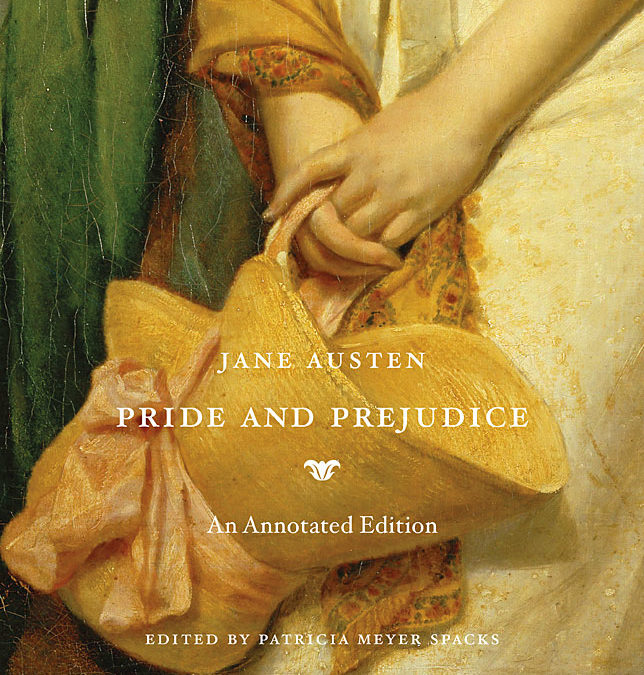
by Sandra Gulland | Jun 6, 2013 | Adventures of a Writing Life, On Research, The Game of Hope, The Writing Process, Young Adult Literature |
As research for writing a YA about Hortense, I’m reading a lot about Jane Austen right now—or, at the least, I seem to be surrounded by books and blogs about her. Yes, I admit, I’m seeking her out.
For example, this wonderful website: What Jane Saw, an exhibit she actually went to see. Follow in her footsteps; look at the paintings she saw.
I’m reading—very, very slowly—the Harvard University Press annotated edition of Pride and Prejudice (shown above). This is a sumptuous book, a sumptuous series. (For a video on this book: click here.)
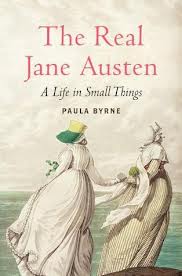
Another book I’m reading is The Real Jane Austen: A Life in Small Things by Paula Byrne: delicious.
And another: A Dance with Jane Austen by Susannah Fullerton, which I discovered through the wonderful blog Jane Austen’s World. This is a wonderful book.

“Why Jane?” my son asks, and I have to tell him frankly that I don’t think she’d be his cup of tea. But then neither might be Dickens or Shakespeare, at least not in his fast-paced world. In a University course: certainly. And then, forced into another time and pace (the beauty of higher education), he might think, “Wow.” For she’s right up there with the greats of literature.
This in spite of the fact that she is so very subtle, so not showy. Who was it who said—I think it was Virginia Woolf—that it’s very hard to catch Jane Austen in an act of greatness.
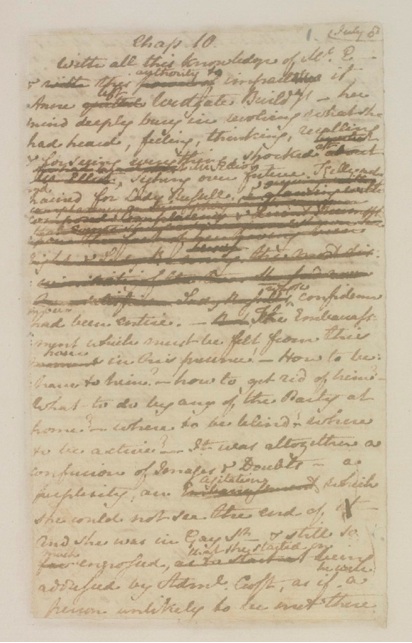
She wrote during the day, and read what she’d written to her family in the evening. She did not have a desk of her own, much less a room.
It’s a mistake to think that her’s was a purer world. The worlds she created are pure, yet a man she and her sister admired, a nobleman, had a strange affection for drinking the blood of his servants. (Note that such details do not show in her novels.)
For Mother’s Day, my son suggested I pick a t-shirt from this wonderful site: Out of Print Clothing.
Which one did I pick? Well, of course: Pride and Prejudice:

I love it! (And no: this is not me.)
What’s your favourite Jane Austen? And why?

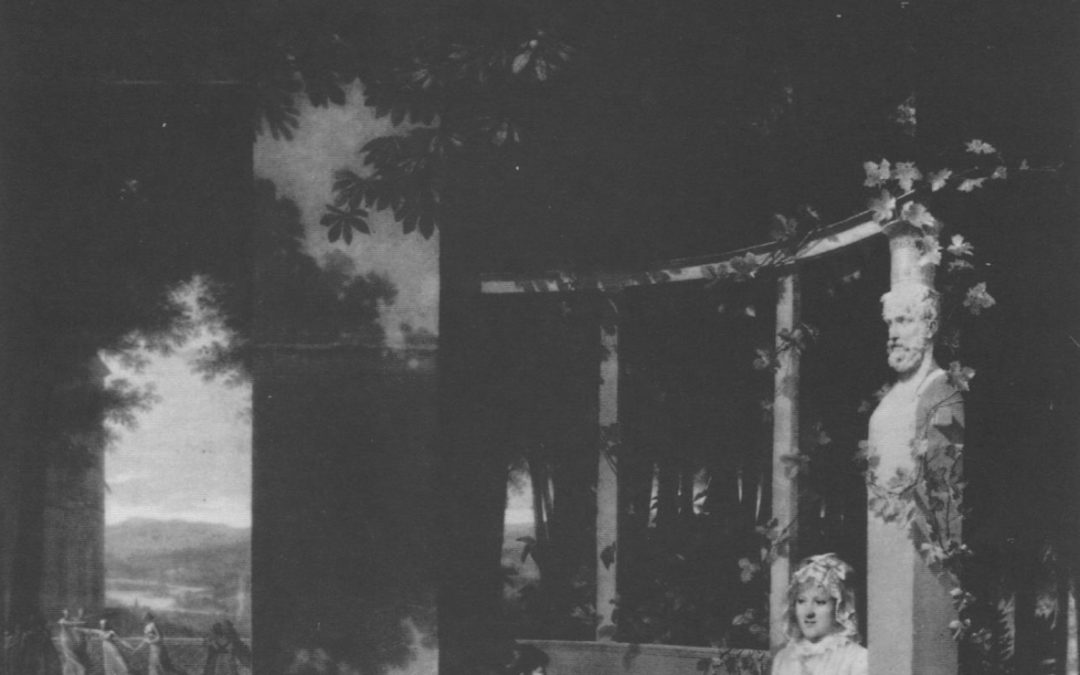
by Sandra Gulland | Jan 3, 2013 | Baroque Explorations, On Research, The Game of Hope |
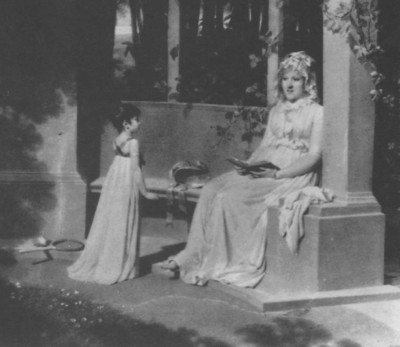
On July 31, 1794, Madame Campan opened her boarding school for girls on rue de Poissy in Saint-Germain-en-Laye, a town not far from Paris.
In the spring of the following year, on May 25, she rented Hôtel de Rohan on 42, rue de l’Unité—now 42, rue des Ursulines—opening the school there on July 1, 1795.
Two months later, on September 1, Josephine de Beauharnais (soon to marry and become Josephine Bonaparte) enrolled her daughter Hortense and her niece Émilie. Her son Eugène was enrolled in a school for boys next door.
Images of the former Hôtel de Rohan
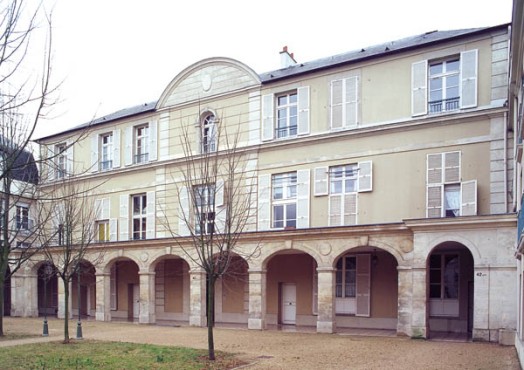
The French government provides all sorts of information on historical sites. This one is a treasure of information and images:
Here is a map detail from the mid-18th century:
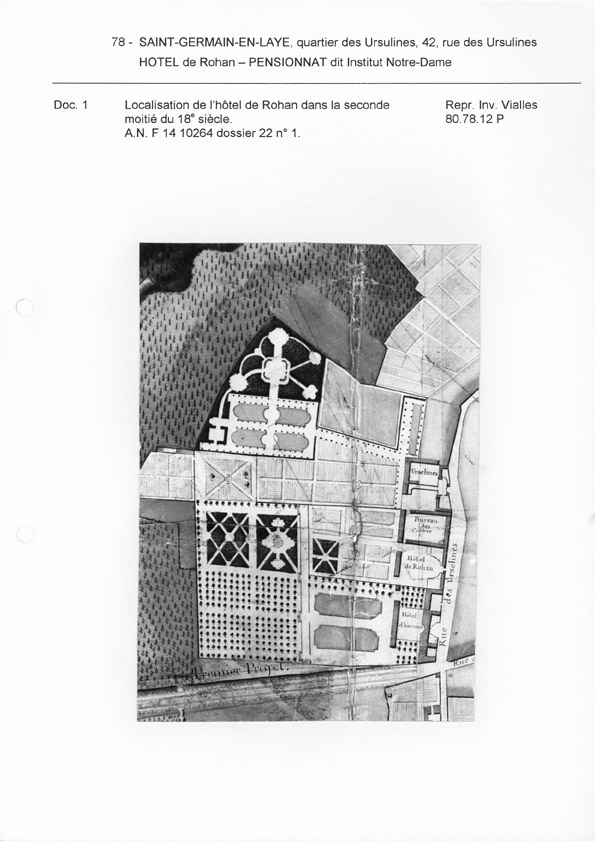
And another one from 1820:
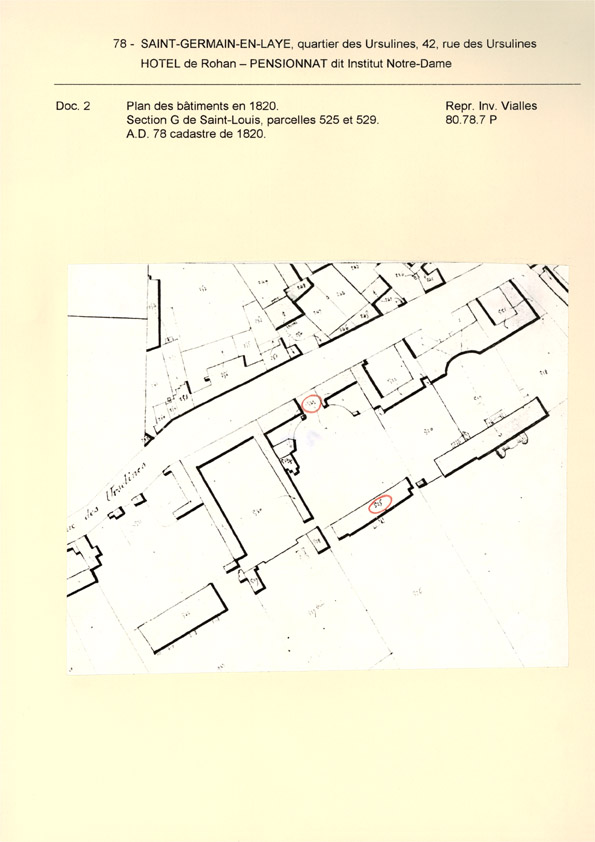
The inner courtyard (mid-19th century):
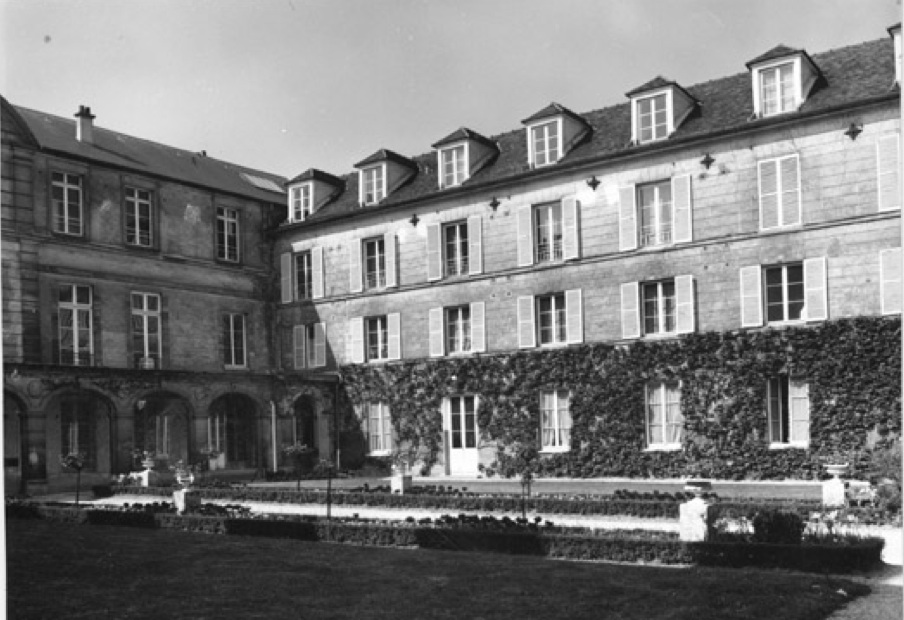
The basin in the entry:
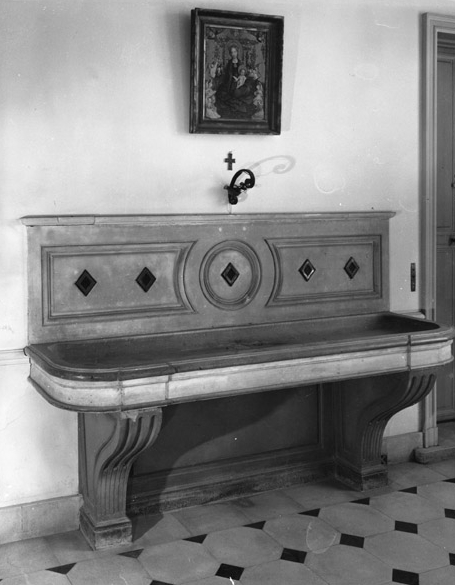
You can see it filled with plants here:
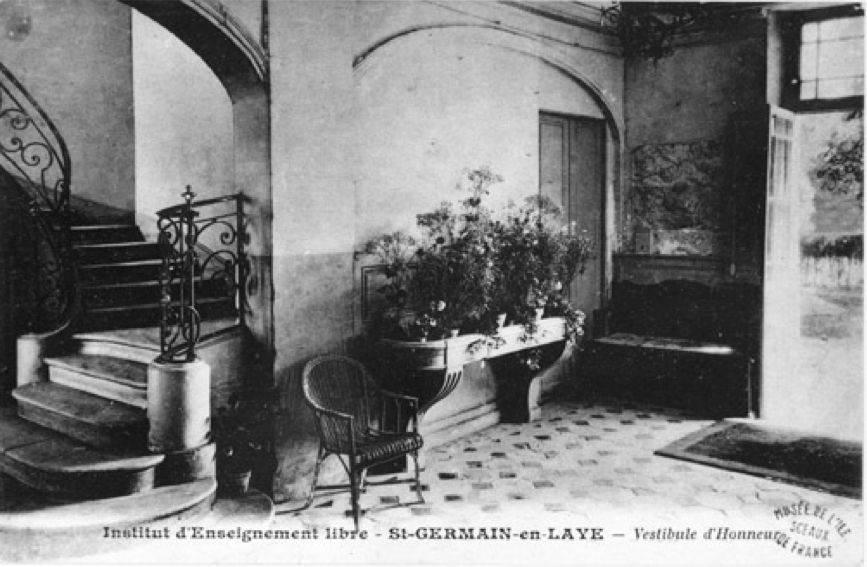
And here’s a detail of the staircase:
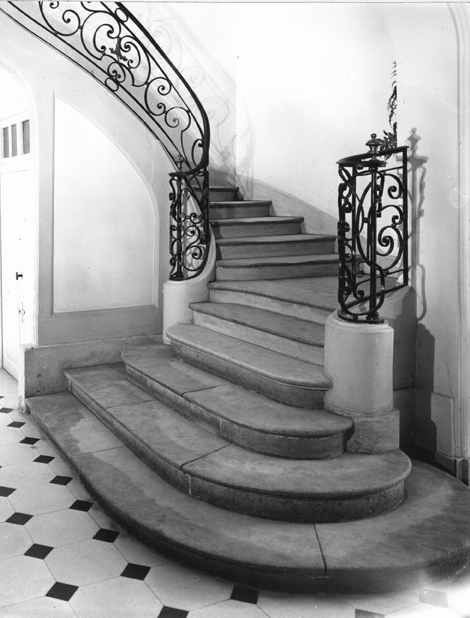
The “school” today
The former Hôtel de Rohan is now an apartment block. On a research trip in 2014, a former resident of the apartments was kind enough to show me in to see what remains of Madame Campan’s school.
Much of it is new, but there are some remnants of the former Hôtel de Rohan:
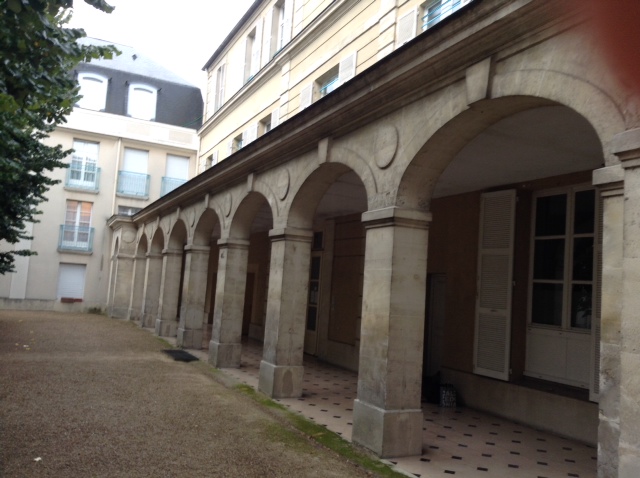
In the back garden, there was this intriguing bit of antiquity:

A bit of the former chapel, perhaps? One can only guess.
Here is the layout of the apartment complex, “Le Parc des Ursulines.” The photo of the arches above are where the “I” is on this plan. The grotto is in the garden beyond.
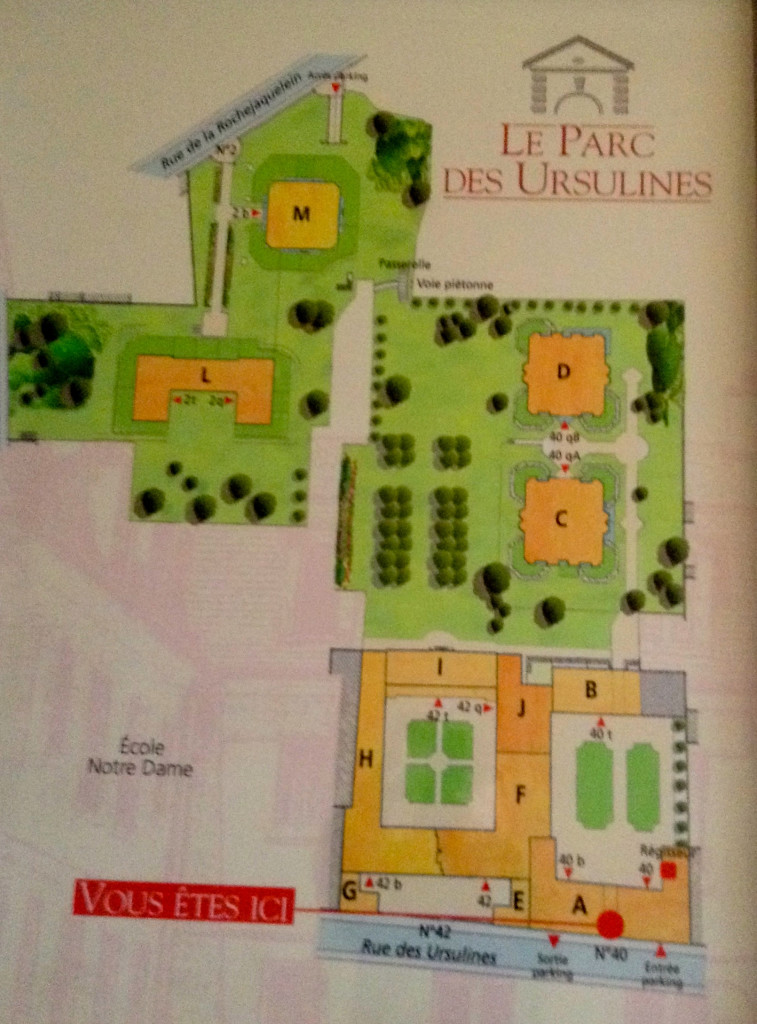
On the name of the school
How was Madame Campan’s school referred to at the time? Here are two possibilities:
L’Institut National des Jeunes Filles/National Institution for Young Women
I’ve also seen (but only in English): National Institution for the Education of Young Women.
l’Institut national de Saint-Germain/The National Institution of Saint-Germain
I have doubts about this last name because during the Revolution the name of Saint-Germain-en-Laye had been changed to Montagne-Bon-Air. It was changed back to Saint-Germain-en-Laye 28 février, 1795, but would Madame Campan have been so bold as to use the former aristocratic name immediately?
SaveSave
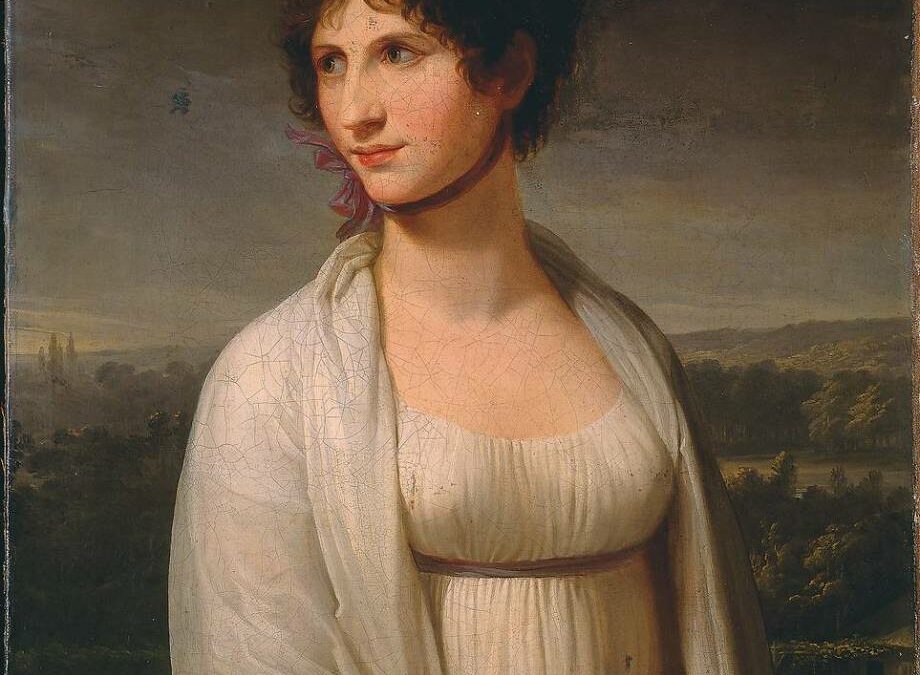
by Sandra Gulland | Oct 5, 2012 | Baroque Explorations, On Research, The Josephine B. Trilogy |
[From a portrait of Josephine, painted by Appiani during her first voyage to Italy.]
I’ve had very interesting comments on this blog from a reader in Russia, concerning Josephine. “La Reine Margot” raises a number of questions, which I’m going to attempt to answer here. (Please keep in mind that it has been over a decade since I was deep into research into Josephine’s world! There might well be new findings. Consider this an evolving discussion.)
Basically, La Reine Margot would like to know about the relationship between Josephine and Hypolite Charles. “I know that you have some doubts about a sexual relationship between Josephine and Charles.” She’d like to know why I have doubts.
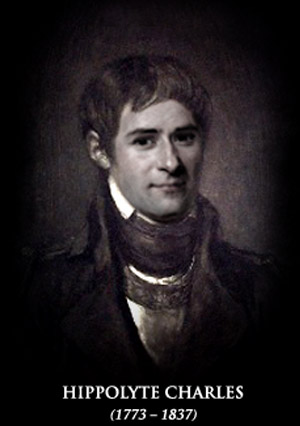
First of all: lack of real evidence. There is only gossip. La Reine notes the saying, “Where there is smoke there is fire.” True, but one learns when studying history that gossip is often used as a weapon, often intentionally. (As when the English planted the rumour that Josephine’s daughter Hortense was pregnant by her step-father Napoleon.) Smoke clouds are sent up, if you will, to make people suspect a fire. One learns, too, that the partners of powerful men are often maligned—something one sees often now, as well.
“Of course the Josephine’s letters to Charles are fakes … but what is the story of this fake? … What is the reason for this hoax?”
It’s impossible to know who created this hoax, but it’s easy enough to see who financially profited from it: the biographer/historian who first printed it.
And from what sources come this affirmation? If I remember correctly there are two main sources: the dutchess d’Abrantes memoirs and those of monsieur Hamelin. Laura [d’Abrantes] and her co-author Balzac of course retold gossips. But were these gossips unfounded?
In short: I think yes.
Abrantes was mean in her memoirs with respect to Josephine, but keep in mind that they were published after Napoleon had been exiled, when she had a lot to gain by this stance. (Correct me if I’m wrong.) It’s worthwhile noting that in Abrantes’ letters to friends written while Josephine was alive, she was nothing short of worshipful in her descriptions of the Empress—a strikingly different point-of-view from that stated in her memoirs.
As for Hamelin’s memoirs… If he lied, what was the reason? Perhaps he invented some details. but what was his purpose to lie about the very nature of the relationship of Josephine and Charles?
Why would Hamelin lie? He was a notorious lier, for one thing. (For another: when was his memoir published? I tried, without success, to find out—but that might provide a clue.)
All Hamelin said was that he saw Charles’s coat outside Josephine’s room—and from that one thing, all is conjectured. Even if true, I think Charles and Josephine might well have had reason to be behind closed doors: counting the profits from their illicit financial endeavours and plotting future investments most likely (IMO). Remember: this was an ill woman going through a violent and early menopause. It’s not impossible that she was having an affair with Charles, but it’s not impossible that she was not.
Are there any others sources? if I remember correctly Bourrienne described that it was Junot who finally told the truth to Napoleon. I never understand the reason for what he decided to do it but I can’t understand his reason to lie too. Louise Compoint of course had this reason. But he?
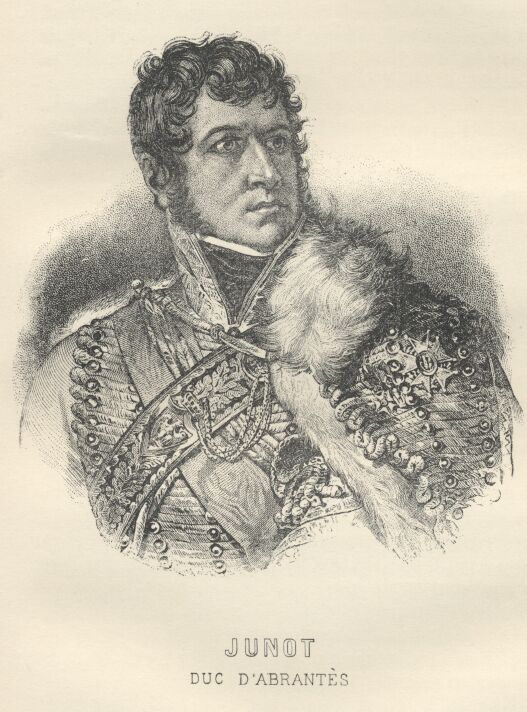
What did Junot have against Josephine? Josephine fired her femme de chambre Louise Compoint for sleeping with him, for one thing. Louise did her best to malign Josephine after, and I wouldn’t be surprised that she recruited her lover into this effort. (Ironically, Louise, later in need of money, came to the then Empress Josephine, who, never one to hold a grudge, gave it to her.)
Josephine had a number of male friends, but most notably Barras and Charles. She was a modern woman in this respect: comfortable in the world of men. Someone once said to me a long, long time ago: “She enjoyed the company of homosexuals.” All this is conjecture, but I sense this might have been true. Before she became Empress, Josephine was a bohemian woman with artistic tastes.
And the nature of the relationship Josephine and Barras? They certainly were friends and partners. But were they lovers? As for me, I think that they were. I suppose that this man was bisexual, but not gay. If he was gay, who was the father of one of the children of Therese Tallien?
Therese only had one child—a daughter, Thermidor—and Tallien was the father. I don’t believe I’ve ever read that she had a child by Barras. (Again, let me know if I’m mistaken.) To my knowledge, Barras did not have any children.
This child if I remember correctly was born in the chateau Grosbois and it was common knowelege that it was his child. And personally I can’t believe that this canny and licentious man could help Rose without demanding sexual toll in return.
I’d be interested to know your source!
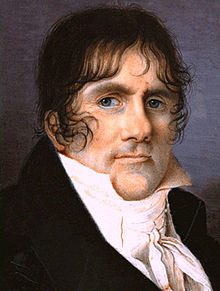
Barras was “repaid” for his help to Josephine many times over by the powerful financial contacts Josephine was able to provide to wealthy Island bankers she’d come to know as a Freemason. Dr Catinat told me that in the exchange of goods and favours between Josephine and Barras, Barras was very much the winner. There was no call for a “sexual toll” in return. The claim that Barras must have been enjoying Josephine’s sexual favours is based on the assumption, in part, that that is all a woman has to offer.
When did Josephine’s [menstrual cycle] stop? What was her age?
You can understand that this type of information is not revealed! We can only guess. What we do know is that Josephine said she was pregnant by Napoleon while he was in Italy. It’s later conjectured that she was lying in order not to have to join Napoleon in Italy. And then, again, it’s conjectured that she was lying when she wrote to Napoleon to say she was very sick.
But imagine that she was not lying: what if her menstrual cycle had stopped and she assumed it was because she was pregnant? If you look at the evidence—various letters, etc.—it’s clear that she really was quite sick during this period of time. Dr Catinat, who is a medical doctor (as well as a foremost expert on her life), suspects that she’d gone into early menopause at the age of only 32. Frankly: this fits. It would explain why she thought she was pregnant (missed period), and why she was so prone to tears at this time.
On top of that, clearly she had something amiss, for she suffered fevers. Quite possibly she had some sort of infection. All this is during that famous trip to Italy with Charles and Junot and Hamelin. I find it hard to imagine a torrid love-affair with Charles while in such a state, and in such company.
As for Charles: he married quite late and never, to my knowledge, had children. No doubt he and Josephine were close … and no doubt they were in secretly involved financially. It’s possible that there was a sexual relationship … but it’s also possible that there wasn’t.
When I was in Paris last summer for the filming of the documentary about Josephine, I chatted at length with Bernard Chevalier, former curator of Malmaison and co-author of a biography about Josephine. I asked him: “If you could ask Josephine one question, what would it be?”
He said, “I would ask her about Captain Charles.”
And I said, “Me, too.”
Because, frankly, we really don’t know.
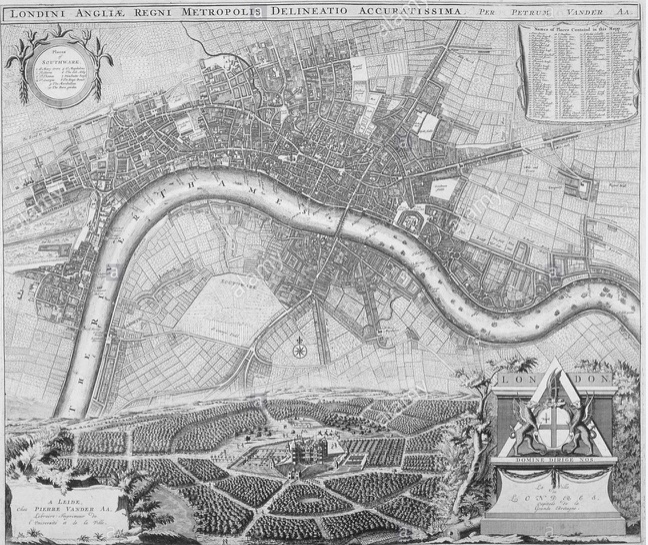
by Sandra Gulland | Jul 5, 2012 | Baroque Explorations, On Research |
London Lives (1690 – 1800) is a wonderful research site. Put in a search term, and lots comes up, mostly quotes from Court records.

For example, because I’m fascinated with early theater right now, I searched “players” and got a vivid snapshot of daily life.
I loved this best—a definition of who would be deemed a Rogue and Vagabond (and thus taken directly to the Justice of the Peace):
THAT Persons pretending themselves to be Patent-Gatherers, or Collectors for Prisons, Goals, or Hospitals, and wandring abroad for that Purpose; all Fencers, Bear-wards, Common-Players of Interludes, Minstrels, Juglers; all Persons pretending to be Gypsies, or wandring in the Habit or Form of counter-feit Egyptians, or pretending to have Skill in Physiognomy, Palmistry, or like crafty Science, or pretending to tell Fortunes, or like phantastical Imaginations, or using any Subtle Craft, or unlawful Games or Plays; all Persons able in Body, who run away, and leave their Wives or Children to the Parish, and, not having where with otherwise to maintain themselves, use Loytering, and refuse to work for the usual and common Wages; and all other idle Persons wandring Abroad and begging (except Soldiers, Mariners or Sea-faring Men licenced under the Hand and Seal of some Justice of Peace, fetting down the Time and Place of Landing, the Place to which, and the Time within which, they are to pass, while they continue in the direct Way and during the Time so limited) Shall be deem’d Rogues and Vagabonds.
Delightful expressions:
“crafty Science”
“phantastical Imaginations”
“Subtle Craft”
Note that licensed soldiers and mariners were allowed to beg.
Do you have a research site you can recommend?
SaveSave
SaveSave


























